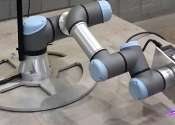Simulated human eye movement aims to train metaverse platforms
Computer engineers at Duke University have developed virtual eyes that simulate how humans look at the world accurately enough for companies to train virtual reality and augmented reality programs. Called EyeSyn for short, ...
Mar 7, 2022
0
116









